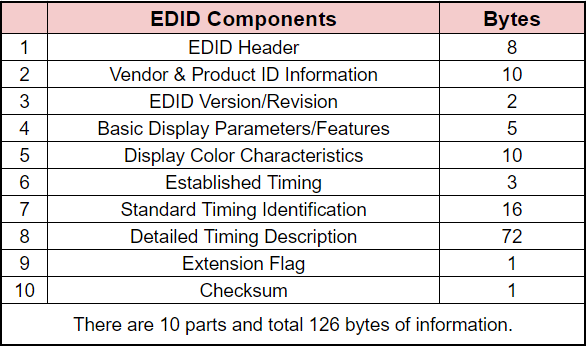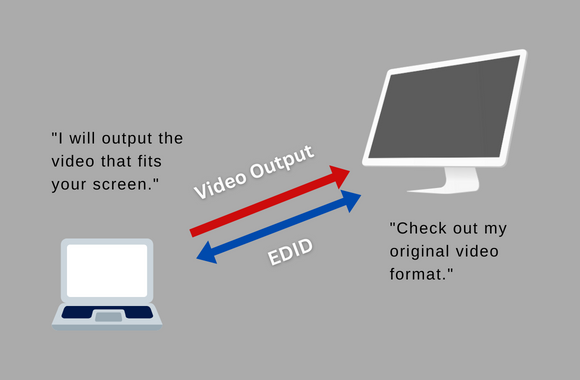What’s EDID and Why Is It Important?
EDID, or extended display identification data, is the structured data embedded in a display that is used to notify the source device of its capabilities. Based on this communication (also known as EDID handshake), the source device figures out the best video output in this situation and delivers it to the viewer.
What Is EDID?
EDID stands for Extended Display Identification Data. EDID is like an identity of a display that records information such as the display dimensions/screen size, original resolution, color properties, frequency range limits, etc. When the source device gets this information, it can deliver the image of certain specs accordingly.
Computers (the graphics card), DVD players, and Blu-Ray players are often the source devices that do EDID handshake with a display like LCD displays and digital TVs. They will read the EDID and output the appropriate video format.
What Data Is Transmitted through EDID?
An EDID information is communicated within a 128-byte data structure that contains relevant manufacturer and operation-related data. The data of the current EDID version is structured as below:

Basic display parameters (Item 4) and features include video input type (analog or digital), display size (horizontal and vertical size), display gamma, and other supported features such as auto-sync, power management, etc.
Established Timings, Standard Timing Identification, and Detailed Timing Descriptions define the video resolutions/timings that are supported by the display and describe additional video resolutions in detail so that custom video timings/resolutions can be supported.

EDID and DDC
DDC (short for Display Data Channel) is a standard by VESA (Video Electronics Standards Association) just like EDID. While DDC is only a description of the interface, EDID refers to the actual data transferred between the graphic adapter card and the monitor.
EDID information is normally exchanged when the video source connects. The DDC requirements include a 5V supply connection for the source to give power to the EDID circuitry so that information could be exchanged even when the display is off.
The video source will submit an EDID request via the DDC during startup. Hot-plug detection is supported by both standards and EDID information will be transmitted whenever the display is connected to a source device.
The two associated standards offer a plug-and-play experience for information exchange between display and source. EDID gives display information and DDC provides the physical interface between the display and the source.
All of your display device connections, including intermediate devices such as extenders, switches, and accessories like cables, amplifiers, repeaters, and converters, must support DDC in order for EDID information to be available at the source.
If one or more connections in the chain do not support DDC, the display may display incorrect colors, size, or position, or nothing at all.
EDID Benefits
Without the EDID feature, your video source device won’t be able to know beforehand the capacity of the display and have no chance to adjust the output and get the best image for your experience. Here are the benefits of EDID:
- enables your laptop to detect and learn about the capability of displays it connected to
- reduces manual adjustment of the video display settings
- avoids incorrect image display because of the wrong settings
- utilizes your displays to the fullest capabilities
AV Access Extenders Using EDID Pass-Through
Display troubles might occur if the devices applied between the display and the source lack EDID transfer capabilities. For example, if you are using an HDMI extender to extend the computer image to a TV screen at distance, make sure the extender supports EDID pass-through.
As the EDID handshake can be done perfectly, the image will be always adjusted to fit your display.
AV Access is an experienced, professional ProAV & IPAV manufacturer and we offer quality KVM extenders, HDMI extenders, AV over IP solutions, and more.
Original copy: https://www.avaccess.com/blogs/guides/what-is-edid/

